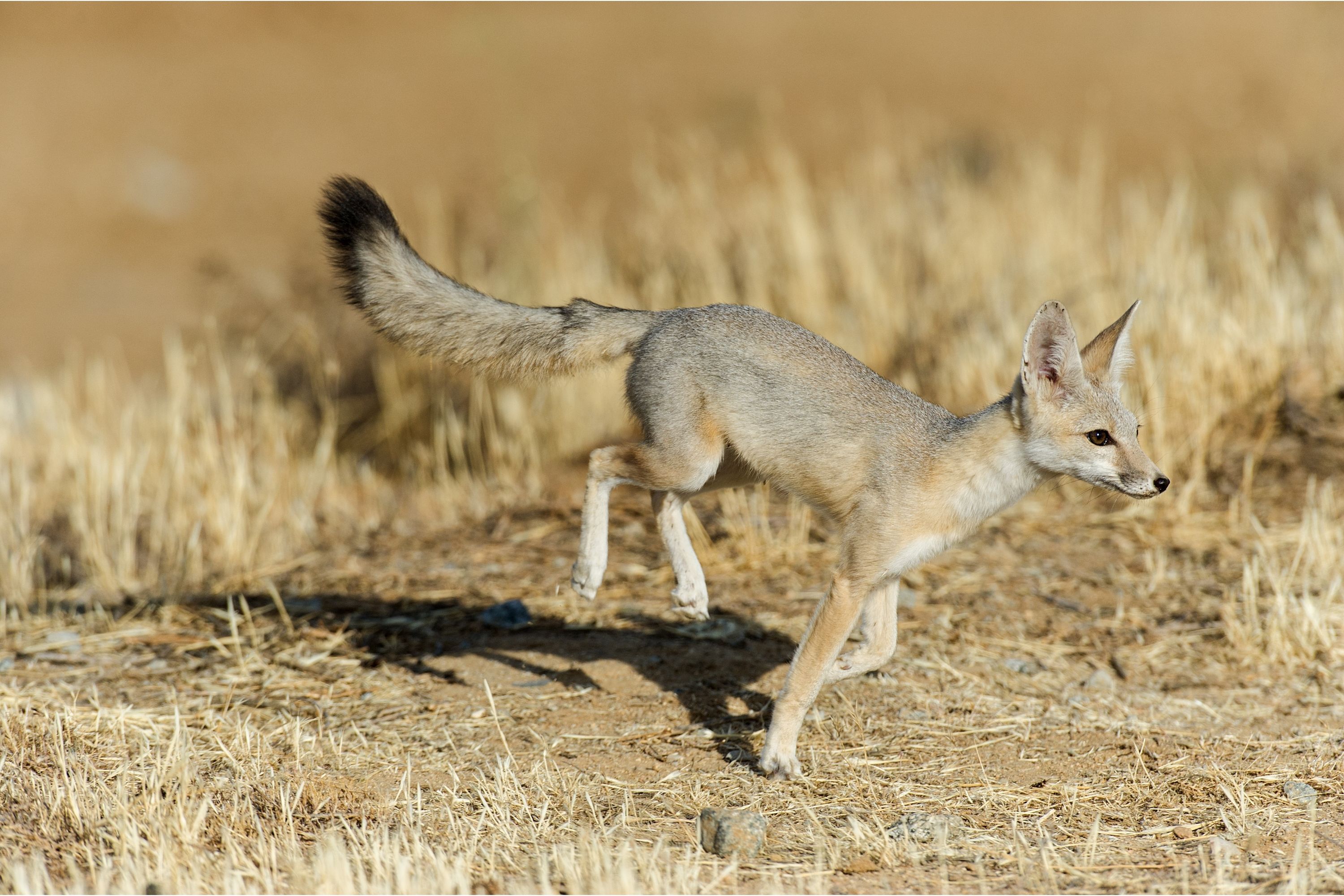Kit fox
(Vulpes macrotis)

Description
The kit fox (Vulpes macrotis) is a fox species that inhabits arid and semi-arid regions of western North America, primarily in the Southwestern United States and northern and central Mexico. These foxes are the smallest of the three species of Vulpes occurring in North America and are among the smallest of the vulpines worldwide. It has also been called a North American counterpart of the Fennec fox due to its large ears. The northernmost part of its range is the arid interior of Oregon. Its eastern limit is southwestern Colorado. It can be found south through Nevada, Utah, southeastern California, Arizona, New Mexico, and into western Texas. Kit foxes inhabit arid and semi-arid regions encompassing desert scrub, chaparral, halophytic regions, and grasslands. Generally, areas with sparse ground cover are favored.Vegetation habitats vary with the regional fauna, but some examples are sagebrush Artemisia tridentata and saltbrush Atriplex polycarpa.Loose textured soils may be prioritized for denning. Kit Foxes can also be found in agricultural areas, in particular orchards, on a small basis, and can even inhabit urban areas.They are found at elevations of 400 to 1,900 meters (1,300 to 6,200 ft) above sea level. The color and texture of the coat vary geographically. In general, the dorsal color is grizzled or yellowish-gray. The grizzled appearance is the result of guard hairs that are typically black-tipped or with two black bands separated by a white band. The guard hairs are less than 50 mm long, and particularly prominent in the middle of the back. The soles of the legs are protected by stiff tufts of hair, a trait that improves traction on loose sandy surfaces as well as protection against extreme temperatures; muzzles and vibrisae are generally black to brown. The tail is bushy and gray, with a black tip, and the caudal gland has a pronounced black spot. Unlike the gray fox, it has no stripe along the length of its tail. Its color ranges from yellow to gray, and the back is usually darker than the majority of its coat; its belly and inner ears are usually lighter. It has distinct dark patches around the nose. The ears are tan or gray on the back, turning to buff or orange at the base. The shoulders, the lower sides, the flanks, and the strip about 25 mm wide across the chest range in color from buffy to orange
Taxonomic tree:







